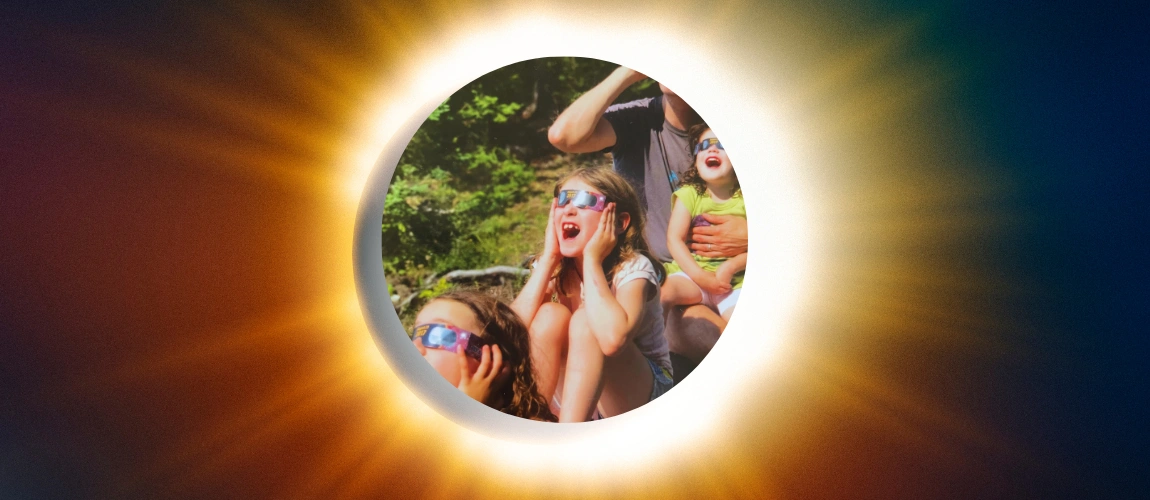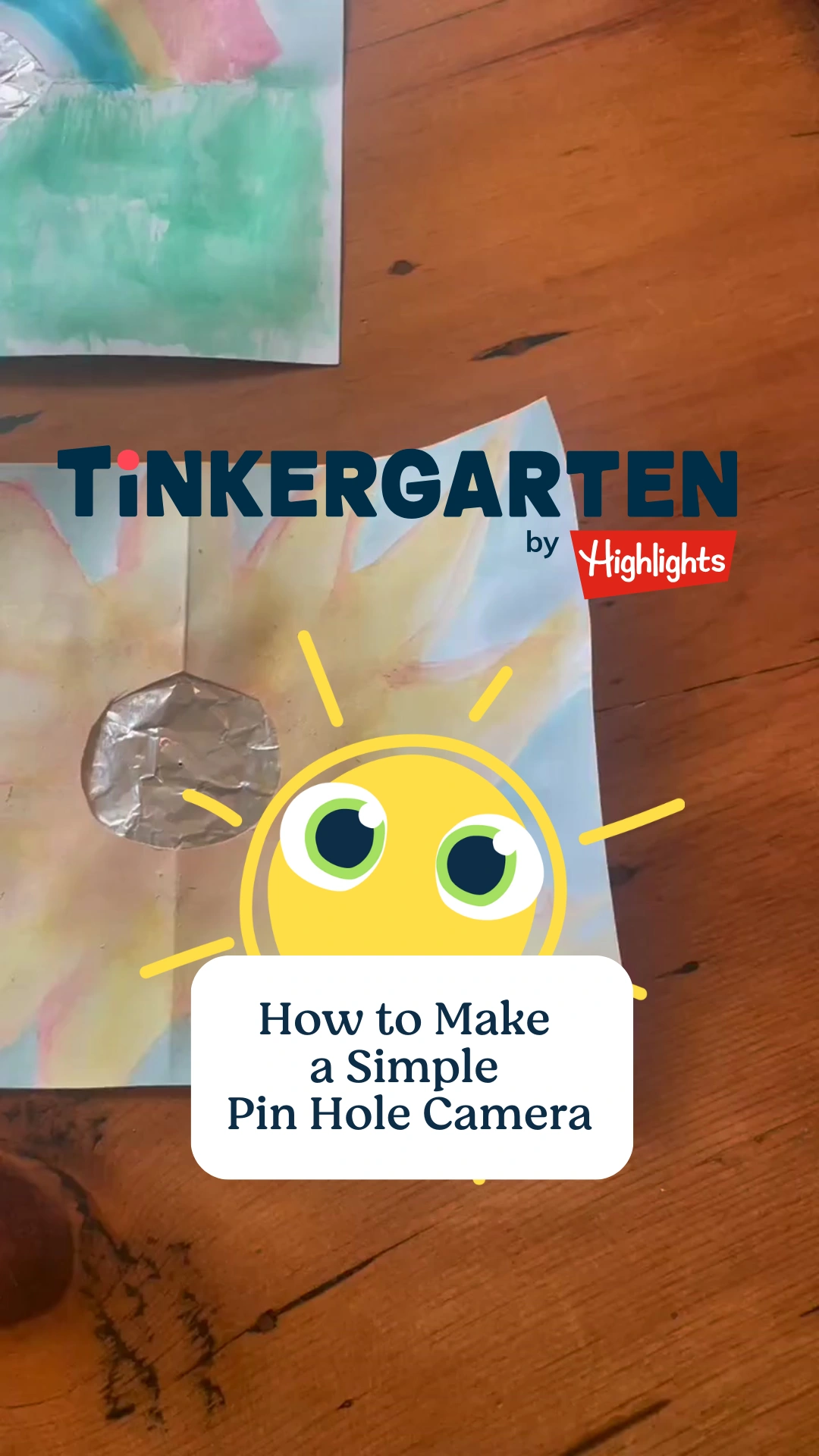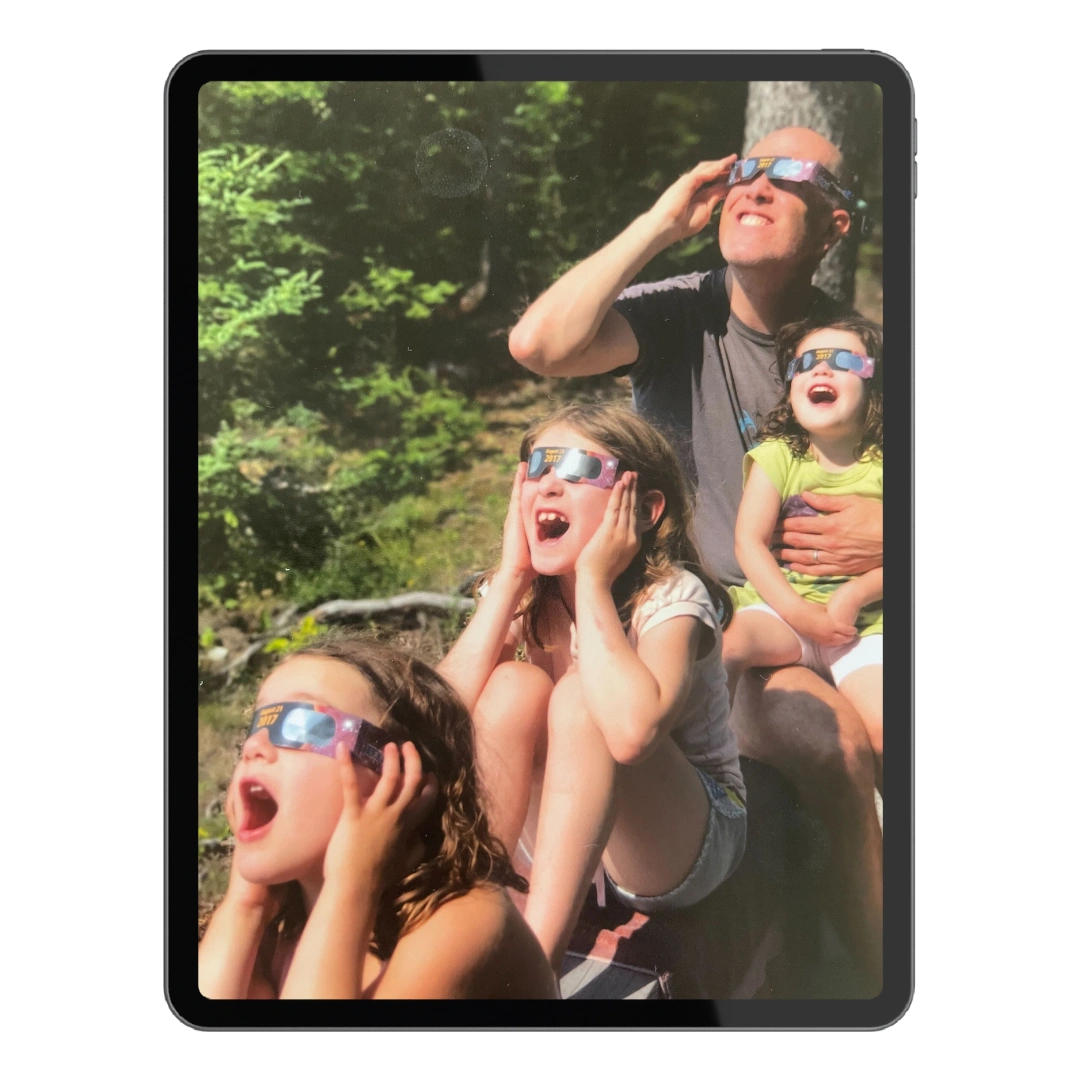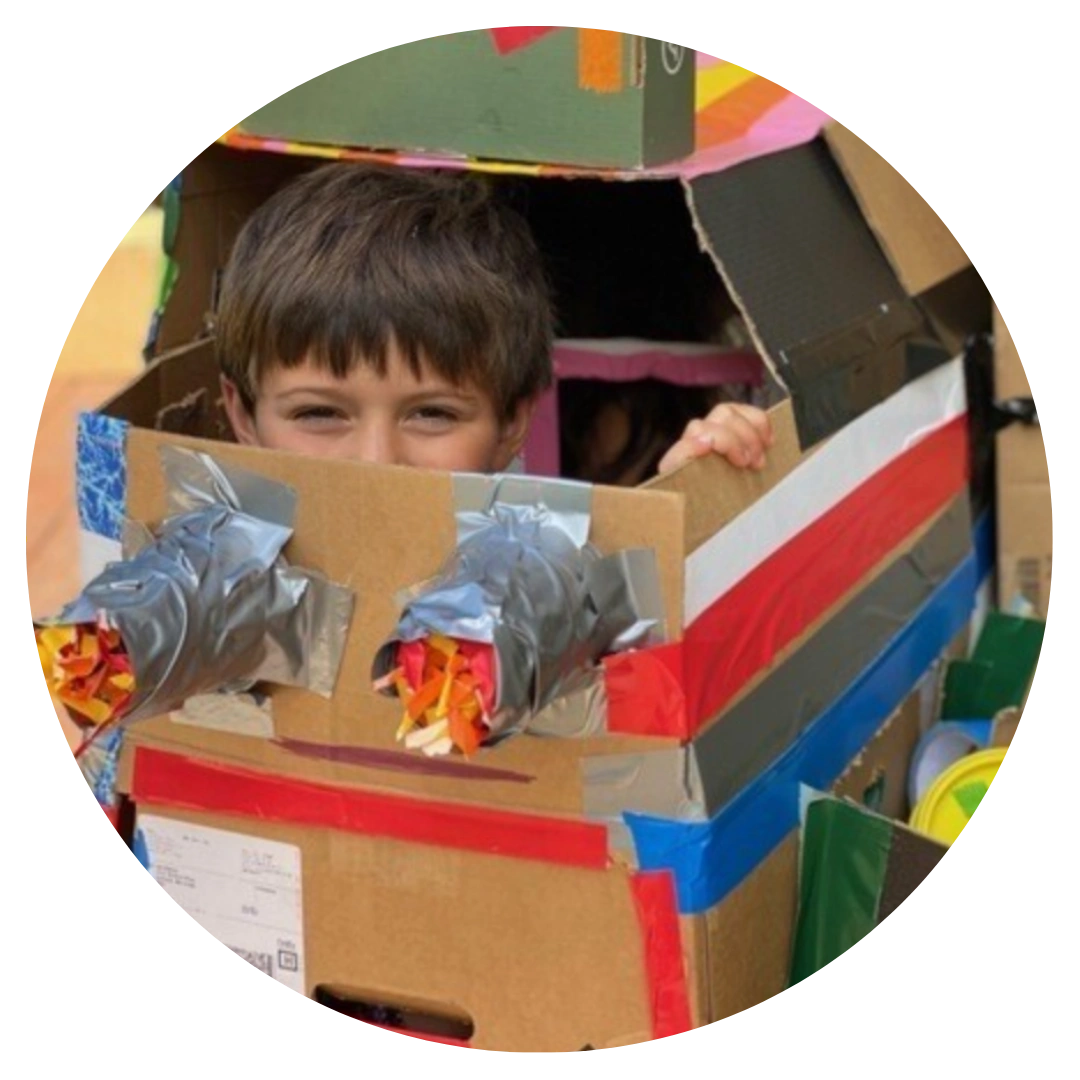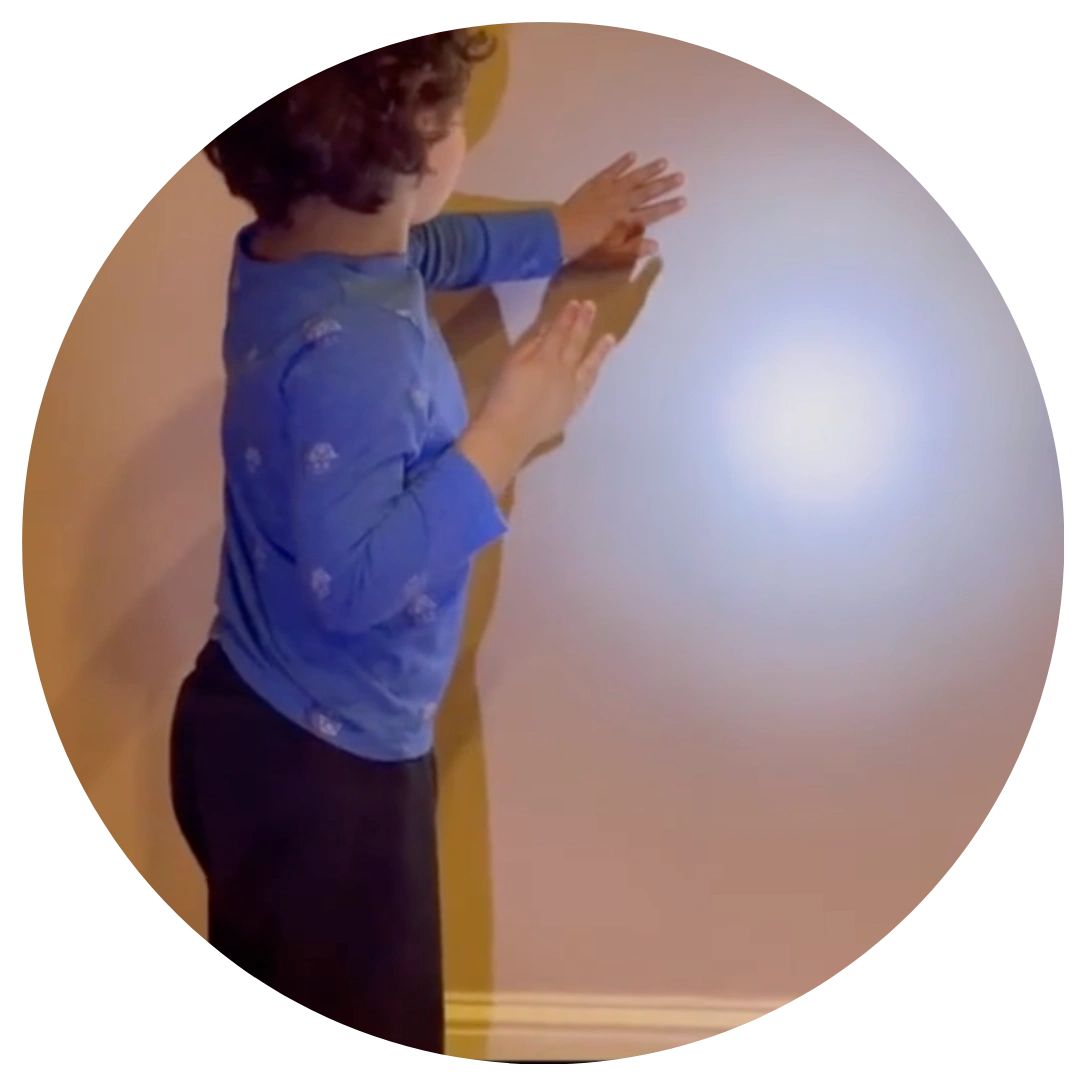On April 8th, this planet, our moon and our sun will reveal themselves in ways that have humbled, inspired and wowed humans for centuries. This solar eclipse has been on our family’s radar for months, and yet given life’s rich pageant (kids, work, dog, leaky pipe, etc.), here we are, eleven days to go, and we still don’t really have a plan. With the next US eclipse not predicted to appear until 2045, we’ve got to get our act together!
Sound familiar? Well, come on in. We did our research, and it’s still totally possible to "totally" enjoy this out-of-this-world event with kids. Read on for ways to see the eclipse from wherever you'll be, how to help young kids (and ourselves) behold the moment safely, and even how to make it a playful celebration.
How To See a Total Eclipse
To experience a full solar eclipse, you’ll need to find yourself within the narrow ~150-mile-wide path called the “path of totality.” This path crosses fifteen of our fifty U.S. states and includes major cities like Dallas, Little Rock, Indianapolis, Cleveland, Buffalo, and Montreal. Check out this NASA map for where that path hits and at what hour on April 8th you’d need to be there to catch the amazing moment of total eclipse.
If you are lucky enough to be in or to travel to a spot within that path, be sure to look around, listen, and absorb it all. Totality is expected to last about 4-and-a-half minutes, twice as long as the last eclipse, but fast nonetheless. Read more from PBS about how researchers will be studying animal responses to get inspired for what you could notice about the creatures, too!
How To See The Eclipse from Most Places
If you are outside of the path of totality, you can still experience a partial eclipse. That includes practically everyone in North America. The farther from the path of totality, the smaller the area of the sun you’ll see covered by the moon. But, even in a far point like the Pacific Northwest, you’ll still see an impressive one-third of the sun covered by the moon.
What’s Safe and Unsafe, Again?
According to NASA, “Except during the brief total phase of a total solar eclipse, when the Moon completely blocks the Sun’s bright face, it is not safe to look directly at the Sun without specialized eye protection for solar viewing.” NASA goes on to warn that viewing any part of the bright sun during an eclipse through the lens of a camera, binoculars or telescope without a solar filter will instantly cause severe eye damage.
Get Protective Eyewear
So, this danger is real, and if looking at the eclipse is something you and your kiddos want to experience, step one is securing appropriate protective wear for your eyes. You can still find eyewear that will arrive in plenty of time via Amazon, but beware that not all “eclipse glasses” are made equal.
At the time of writing this, both Walmart and Target appear to offer NASA-approved glasses and cell phone camera filters online and in most stores. The American Astronomical Society has put together a list of approved vendors for glasses, viewers, and solar filters for telescopes, and we’ve got links to a few of their offerings on Amazon below.
AAS-Approved Glasses:
- Eclipse Glasses (Website)
- American PaperWear (Amazon | Website)
- Thousand Oaks Optical (Amazon | Website)
If you find that glasses are sold out, ask around! We were so behind in planning for the last eclipse that my husband went on Craigslist and was able to find 5 glasses from someone across town. It takes a village sometimes!
Make a Pin Hole Camera!
We love making simple, pin hole cameras...yet another tool we can use to safely behold tomorrow's eclipse. Find out how in this video on Facebook or Instagram, or follow the steps below. All you need is 2 pieces of card stock (or 2 paper plates), tin foil, tape and a pin!
Steps:
- Gather 2 sheets of card stock, aluminum foil, tape, scissors and a pin.
- Cut off 1/3 of the sheet of card stock.
- Fold the remaining 2/3 in half.
- Cut out a circle from along the fold.
- Cover the circle with tinfoil, and tape the piece of foil down carefully.
- Poke a pin in the center of the circle of foil.
- (Optional) Decorate your pin hole camera.
- Take the camera and the other piece of paper outdoors. Let the sun flow through the pin hole and onto the other piece of paper. Observe how the image changes throughout the eclipse.
How Old Is Old Enough?
If I’ve learned anything from teaching and parenting, it’s that every child is different—and every parent’s or caregiver’s comfort with risk differs, too. So, when are kids old enough to be trusted to wear protective eye gear and look at the sun? My best advice is to feel your way.
In general, kids develop a sense of cause and effect around 3-to-4 years old, so careful explanations to them can start to help you in that window. You can also decide to hold the protective eye gear for kids who are younger or extra wiggly, if that gives you more peace of mind. Feel your way.
How to Help Kids Stay Safe
When the last eclipse hit in August of 2017, my kids were 3, 5, and 8, and, as you can see in the photo above, we all enjoyed the chance to look up through our protective glasses. I distinctly remember having a talk about the danger beforehand, and letting kids ask questions. We likened the eclipse to getting a burn if you touch a hot stove, and the glasses were like oven mitts for our eyes.
To prepare kids, we practiced putting the glasses on and looking at a dining room light several times before heading to the big time. One TG community member also recommends poking holes and attaching a cut rubber band between the two sides (aka "temples") to help keep the glasses on kiddos.
We also established a “Ready, Set, 1, 2, 3” chant. Only grown ups could say it, and no one could remove their glasses without a grown up saying it. Worked like a charm!
Finally, knowing that it was my 5-year-old who loved to test limits most, I stood nearest to them, ready to gently remind them if they seemed to need it. All in all, it was a marvelous and totally safe viewing!
Have a Party or Join an Event!
If you can, invite friends, family, or neighbors to come and behold the moment with you. This celestial happening impacts all creatures and living things on Earth. In a blink, we are made aware in ways that are so rarely possible that we are floating in space on a most magical rock with an incredible source of light, warmth, and energy, without which none of us, none of this would be possible. I just can’t think of a better reason to commune with other creatures, if you can.
Some fun ideas for treats (‘cause what is a party without treats?!):
- Chocolate “black out” cake
- Chocolate “eclipse” cookies with just a thin layer of yellow frosting around the edges
- Eclipse eclairs
- Solar smoothies
See even more ideas on Today,com.
Would you like some nature-based, delightful tools to help you celebrate this celestial moment? Check out this super sweet Eclipse 2024 digital party pack from our friends at Wilder Child!
You can also search for “{{your town}} eclipse party” or “{{your town}} eclipse viewing” to find local meetups and events. One of our children’s schools is having a watch party, and there are several community and nature centers offering watch parties where we live, too!
Out of this World Play!
Build on the excitement around outer space by turning a box into a spacecraft. What better perch from which to watch a solar eclipse than aboard your own, homemade rocketship?! Get more ideas in this DIY activity.
Play with Shadows
Experimenting with shadows is a marvelous way to help kids discover STEAM concepts, explore cause and effect and spark imaginative play. Get all kinds of ideas about how to play with shadows in this DIY activity.
To connect shadow play to the eclipse, you can grab a flashlight and some different round objects like circles cut out of paper, balls, bowls, etc. At night, under a sheet or blanket or in a closet/internal room, you can have one person hold the flashlight and the other play with holding two round objects of different sizes at different distances. Move them around and just see what happens to their shadows. Extend general shadow play by introducing all kinds of objects (toys, action figures, shapes, etc).
For kids who are older and interested in experimenting or modeling an eclipse, pretend that the flashlight is the sun and the closer round object is the moon. See if you can move the other object so it’s in total shadow, partial shadow. Explore what that transition looks like.
Share!
If you celebrate this celestial happening in any way, big or small, tag us @tinkergarten. Moments like this have incredible power to bring us closer to nature and to one another. However you experience it, Happy Eclipse, 2024!
